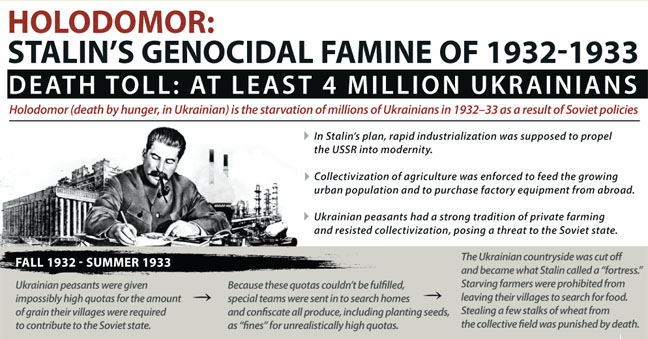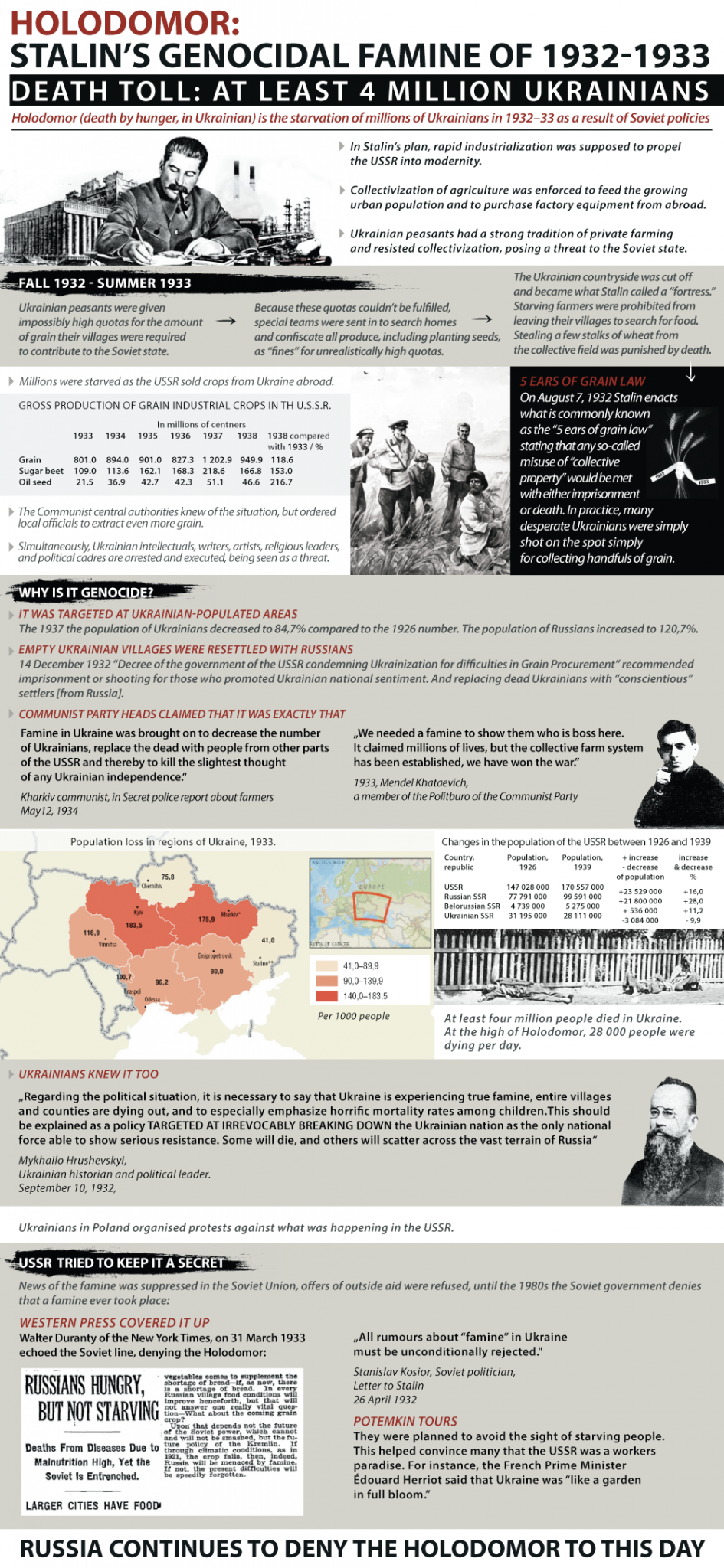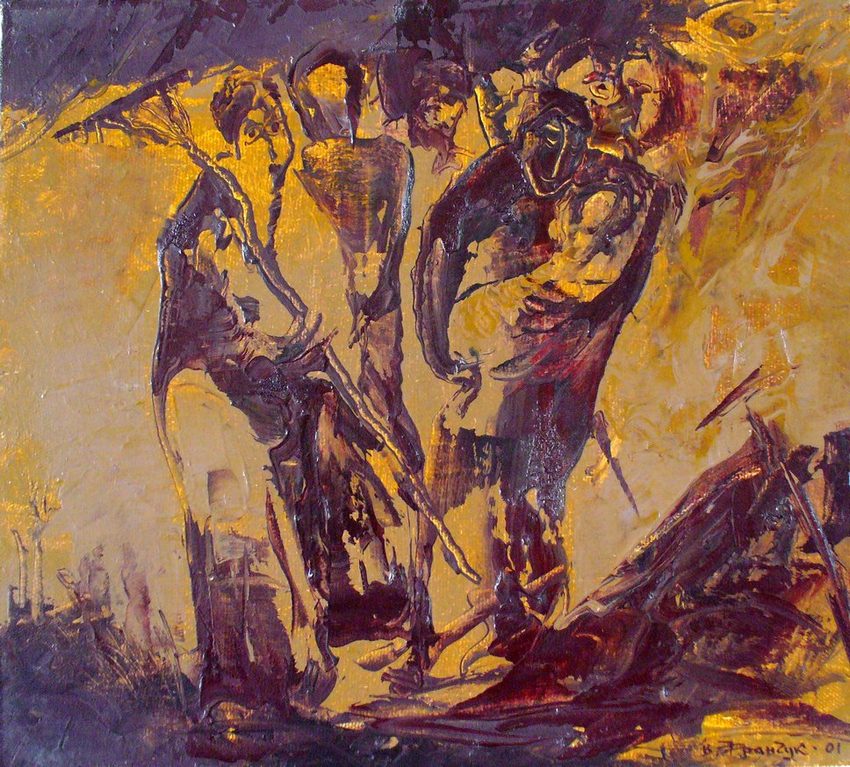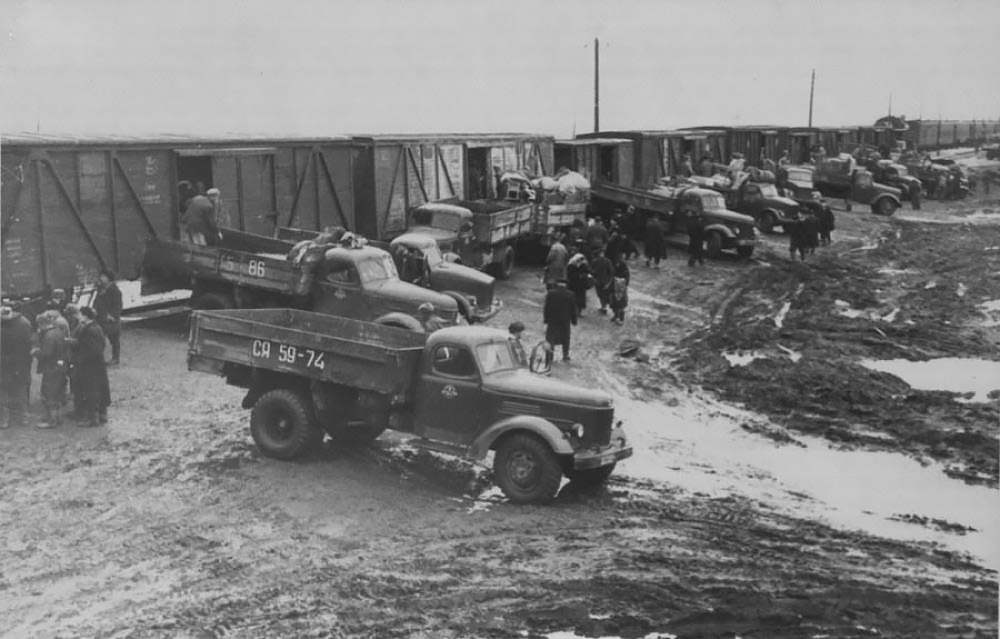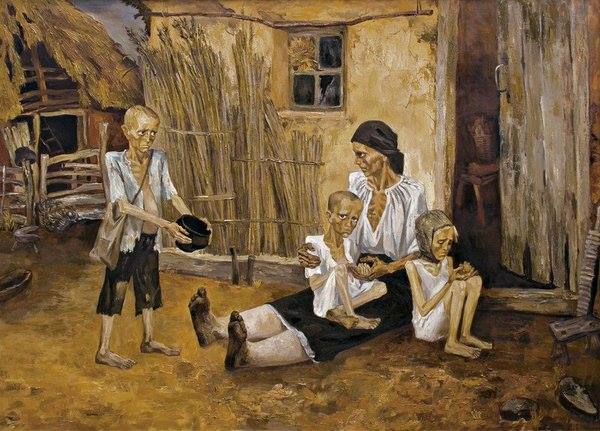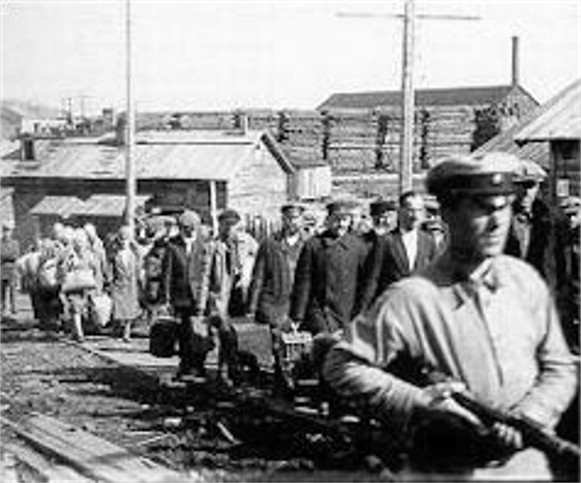Holodomor ("death by hunger" in Ukrainian) refers to the starvation of at least four million Ukrainians in 1932–33 as a result of Soviet policies. The Holodomor can be seen as the culmination of an assault by the Communist Party and Soviet state on the Ukrainian peasantry, who resisted Soviet policies. This assault occurred in the context of a campaign of intimidation and arrests of Ukrainian intellectuals, writers, artists, religious leaders, and political cadres, who were seen as a threat to Soviet ideological and state-building aspirations.
The Ukrainian peasants were given impossible high quotas of the amount of grain to submit to the Soviet state. Special teams were sent in to search homes and confiscate all produce to the last grain. A particularly brutal law called "5 ears of grain law" was passed, following which starving Ukrainians were shot on the spot for gathering grain that remained on the field after the harvest.
As a result, at least four million people starved to death in Ukraine. At the height of the Holodomor, 28,000 people were dying per day. This number does not include the ethnic Ukrainians outside the Ukrainians SSR who died, the half million people deported from Ukraine during collectivization or the thousands of religious, cultural and political leaders who were destroyed.
The USSR attempted to cover up the Holodomor, and Russia continues to deny or diminish it to the very day.
Related:
- Why compare the Holodomor and the Holocaust
- Holodomor or death by starvation changes people's genotype, say psychologists
- Documents show massive export of products from Ukraine during Holodomor
- See which countries recognize Ukraine's Holodomor famine as genocide (Interactive Map)
- History, Identity and Holodomor denial: Russia's continued assault on Ukraine
- Stalin's genocidal Holodomor campaign of 1932-33. What we know vs. the denialist lies
- Holodomor and separatism in the Donbas
- On Holodomor denial, and fisking a denialist Russian professor of History

